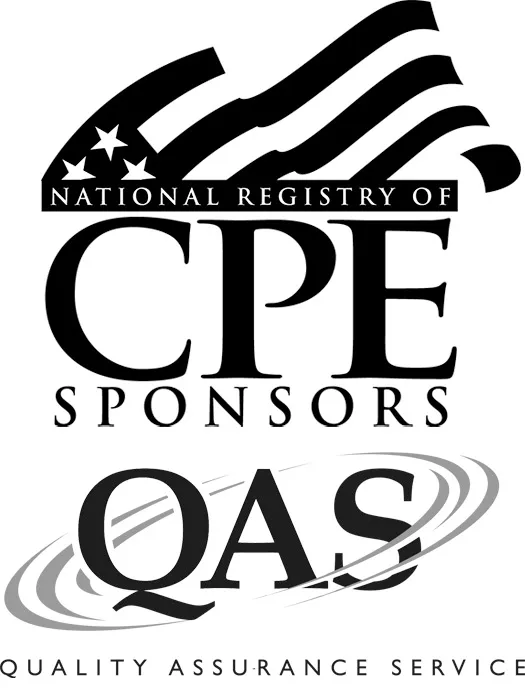
Strategic Higher Education Finance and Planning
-
You must log in to register
- Member - $595
- Non-member - $995

NACUBO's Strategic Higher Education Finance and Planning self-paced online course is designed to help you build your strategic finance knowledge and skills.
In this course, you can expect to—
- Explore the importance of and processes involved with strategic planning
- Examine the value of and learn how to build a data-informed institutional culture
- Consider the challenges and opportunities in generating revenue and allocating resources
- Gain insight into how to be a better communicator and leader at your institution
Why a course in strategic finance and planning?
Higher education institutions are under enormous pressure from shifting revenue streams, rapid innovation, and significant public scrutiny. In this environment, business officers must be able to manage their day-to-day obligations, as well as drive strategic conversations around the business model, future forecasts, and major issues influencings all aspects of the higher education enterprise. The primary responsibility of higher education business officers is managing institutions' finances, but perhaps what may be more important to the future of colleges and universities is the growing strategic role of business and finance professionals.
NACUBO's hope is that completing this course will enable business officers and other higher education administrators to think more strategically about their work and to be better prepared to contribute meaningfully to the future of their institutions.
What business officers are saying about the course
"I would encourage higher education professionals from across the institution—at multiple levels—to take the course. Doing so could help the institution make more significant progress towards meeting institutional goals, particularly during strategic planning."
Chief business officer, private comprehensive university
"This course has broad appeal—those with high-level planning responsibility as well as those who are more hands-on. The case studies and the workbook are excellent."
Associate vice president, public research university
"I am impressed by the quality of the information and the manner in which it's presented and tied together.... I think it is an excellent primer for both new and experienced higher education business professionals."
Chief business officer, public research university
"I really appreciated all of the resources and embedded tools...."
Executive director of strategic initiatives, community college
"The information is actionable."
Chief business officer, public comprehensive institution
"This is definitely information that higher education financial professionals should know to help sustain and move their institutions forward."
Associate vice president, public HBCU
"NACUBO has done an amazing job of assembling the content in a manner that is not only interesting and intriguing but it is practical. This is a great resource for business officers to support the missions of their institutions."
Controller and associate vice president, public HBCU
Learning Objectives
After completing this course, you will be able to—
- Explain strategic planning, its relationship with higher education leadership, and its importance for college and university effectiveness
- Describe how to use analytics to develop, communicate, and affect institutional strategies
- Discuss the drivers behind higher education expenses and strategies for improving resource generation
- Apply best practices of communication for more effective presentations
Modules
With accompanying workbooks, this course includes four modules.
Module 1: The Finance Leadership Role in Strategic Planning
As you journey through Module 1, you will learn and understand what strategic planning is, its relationship with higher education leadership, and its importance for college and university effectiveness. You will evaluate institutional strategic planning and how it relates to the mission of your institution.
After completing Module 1, you will be able to—
- Understand how strategic planning is influenced by the institution's mission, vision, values, and culture as well as organizational structure, including leadership, shared governance, and departmental roles
- Understand the fundamentals of strategic planning
- Assess how the strategic plan affects resource allocation decisions
- Evaluate the utility of the strategic plan affects resource allocation decisions
- Articulate how strategic plans integrate with mission and strategic objectives
Module 2: Making Data-Informed Decisions to Support Institutional Mission and Strategy
Module 2 is focused on the importance and effectiveness of building institutional data literacy and capabilities to leverage analytics—including financial metrics—to develop, communicate, and affect institutional strategies.
After completing Module 2, you will be able to—
- Understand opportunities and barriers to using data analytics in higher education settings
- Evaluate institutional data assets (data your institution has) and develop ways to effectively leverage analytics for decision-making
- Apply new knowledge of data and its financial impact to strategic planning contributions
- Develop effective strategies for translating data into actional information that affects strategic planning and institutional outcomes
Module 3: Revenue and Resource Allocation in Support of Mission and Strategic Goals
In Module 3, you will learn about the history of college cost discussions, the role that planning and budgeting have in revenue generation and resource allocation, drivers behind higher education expenses, and strategies for improving resource generation and use at colleges and universities.
After completing Module 3, you will be able to—
- Discuss the historical context of college costs in the United States
- Explain the budget models and cycles used by higher education institutions and understand the challenges and benefits of the various models
- Identify drivers behind higher education expenses
- Analyze how accounting and reporting results, as well as resource allocation decisions (both operational and capital budget), impact strategic planning
- Examine and assess strategies for improving resource generation and use at colleges and universities
Module 4: Strategic Financial Leadership and Institutional Success
In the final module of the course, you will learn about strategic leadership and its benefits, as well as the importance of leadership presence in higher education. You will analyze persuasive communication and learn to apply best practices of communication to present financial information to different stakeholders.
After completing Module 4, you will be able to—
- Understand various leadership skills and characteristics—and how they can be utilized in higher education settings
- Evaluate how leaders influence change and innovation in higher education
- Leverage you own leadership style to support your institution
- Apply the components of leadership presence to support the financial sustainability and longer-term viability of your institution
- Apply best practices of communication to present financial information to diverse stakeholders
Last Updated: December 14, 2023 | Contact csimone@nacubo.org to inquire about bulk pricing (10+ registrants).
Course Information
- Audience: Professionals new to higher education, mid-level professionals, finance administrators, non-finance administrators, higher education leaders and managers, data analysts, strategic planning stakeholders
- Level: Intermediate
- Prerequisites: Two years in a higher education profession or one year in a finance profession
- Advanced Preparation Required: None
- Delivery Method: QAS Self Study
- Length: Estimated 100-150 minutes per module; 400-600 minutes for the course
- Access: Participants will receive online access to the course for two years
- Last Updated: December 2023
Course Materials
- Learning Modules: A series of four learning modules will guide your learning and check your knowledge as you progress through the course. Modules must be completed sequentially, but you may start and stop to engage with the content at your own pace.
- Workbooks: Supplemental materials, though not required for course completion, will significantly aid your learning and synthesis of information. Each module is accompanied by a workbook containing activities for reflection and application of concepts to your own experiences. We recommend you download each accompanying workbook and complete the activities when prompted by the course.
- Reference Materials: Additional reference materials can be found within the “Resources” tab on the main page of the course. These include a repository of all links contained within the course, a glossary of terminology, and a full, searchable transcript of course text.
CPE Information
CPE Available: 12 Credits in Finance
Each individual must register for and complete the course separately to earn credit.

NACUBO is registered with the National Association of State Boards of Accountancy (NASBA) as a sponsor of continuing professional education on the National Registry of CPE Sponsors. State boards of accountancy have final authority on the acceptance of individual courses for CPE credit. Complaints regarding registered sponsors may be submitted to the National Registry of CPE Sponsors through its website www.nasbaregistry.org.
NACUBO gratefully acknowledges the contributions of the following people and organizations who assisted in the creation of this course:
- NACUBO Members: John Adams, Andrea Ausperk, Alice Brekke, Kathy Byington, Leslie Brunelli, Linda Campos, Danilo Castillo, Shawn Charles, Teresa Costantinidis, Michael Crocker, Brian Fox, Octavio Fuentes, Russ Hannah, Ed Kania, Robert Kuehler, Diana Kuhlmann, Eric Leal, MaryFrances McCourt, Bob Miller, Carla Pierre Gini, Marcus Richardson, Shandra Robertson, Susan Scroggins, Cheryl Soper, Orkun Toros, Margaret Tungseth, Lynn Valenter, and Valarie Van Vlack
- NACUBO Consultants: Diane Goddard, Mary Wheeler, Joanne Yestramski
- NACUBO Staff Members: Mary Bachinger, Liz Clark, Jeanne Cure, Altovise Davis, Jenelle Dembsey, Bryan Dickson, Susan Whealler Johnston, Elizabeth LaRocca, Katy McCreary, Sue Menditto, Ankur Ponda, Ken Redd, Randy Roberson, Whitney Sayce, Christine Simone, Lindsay Wayt, and Morgan Witter
- Beyond Campus Innovations
- Mirai Media

